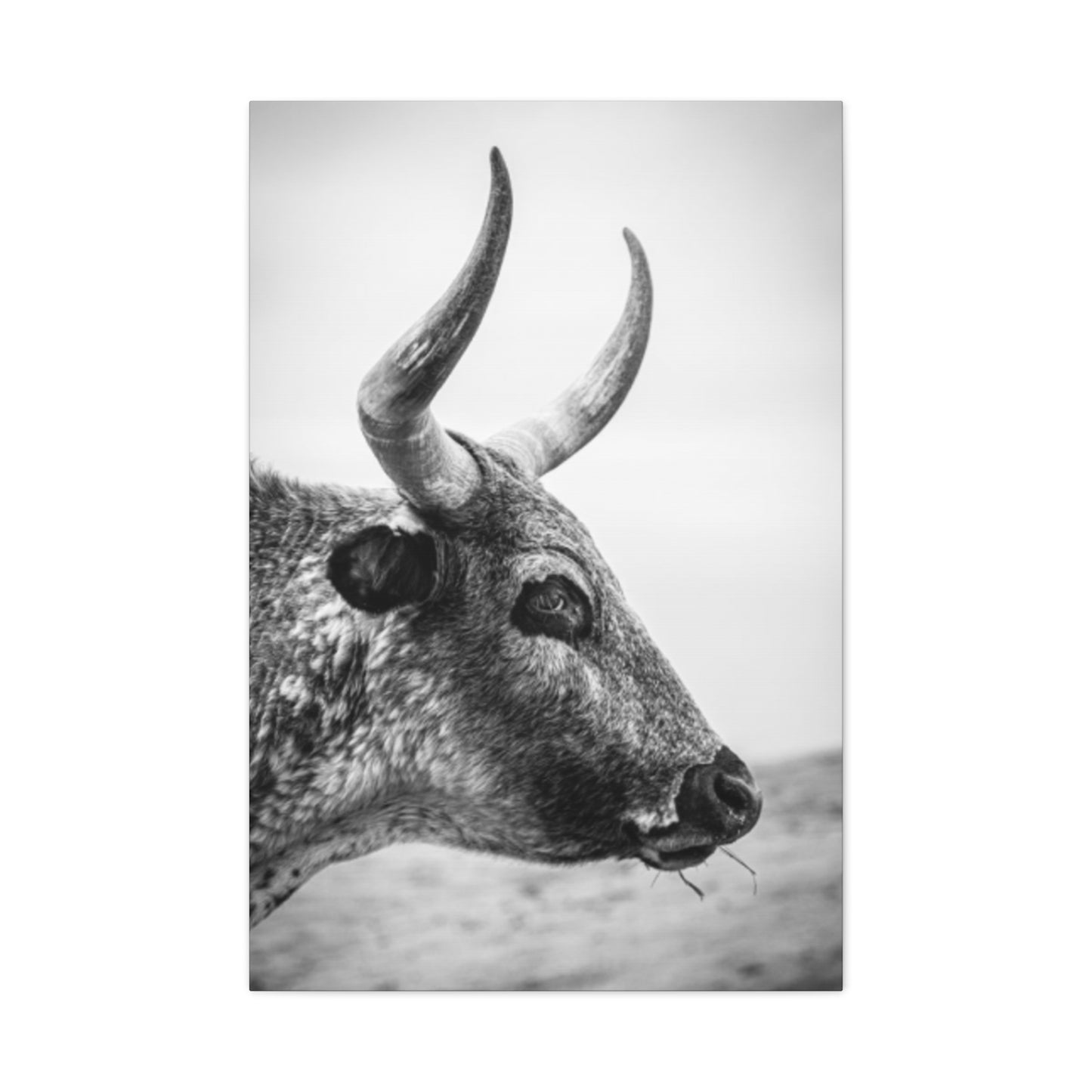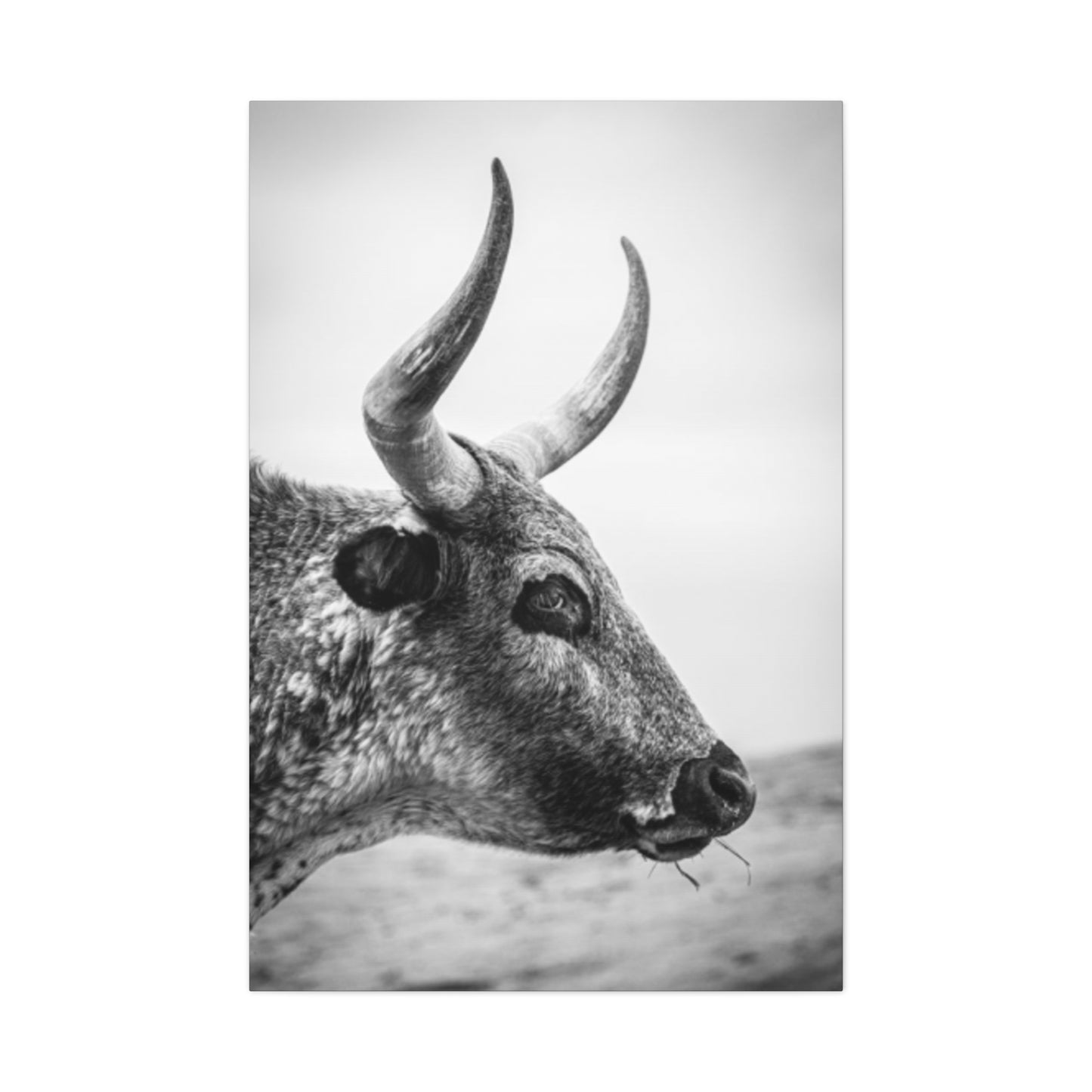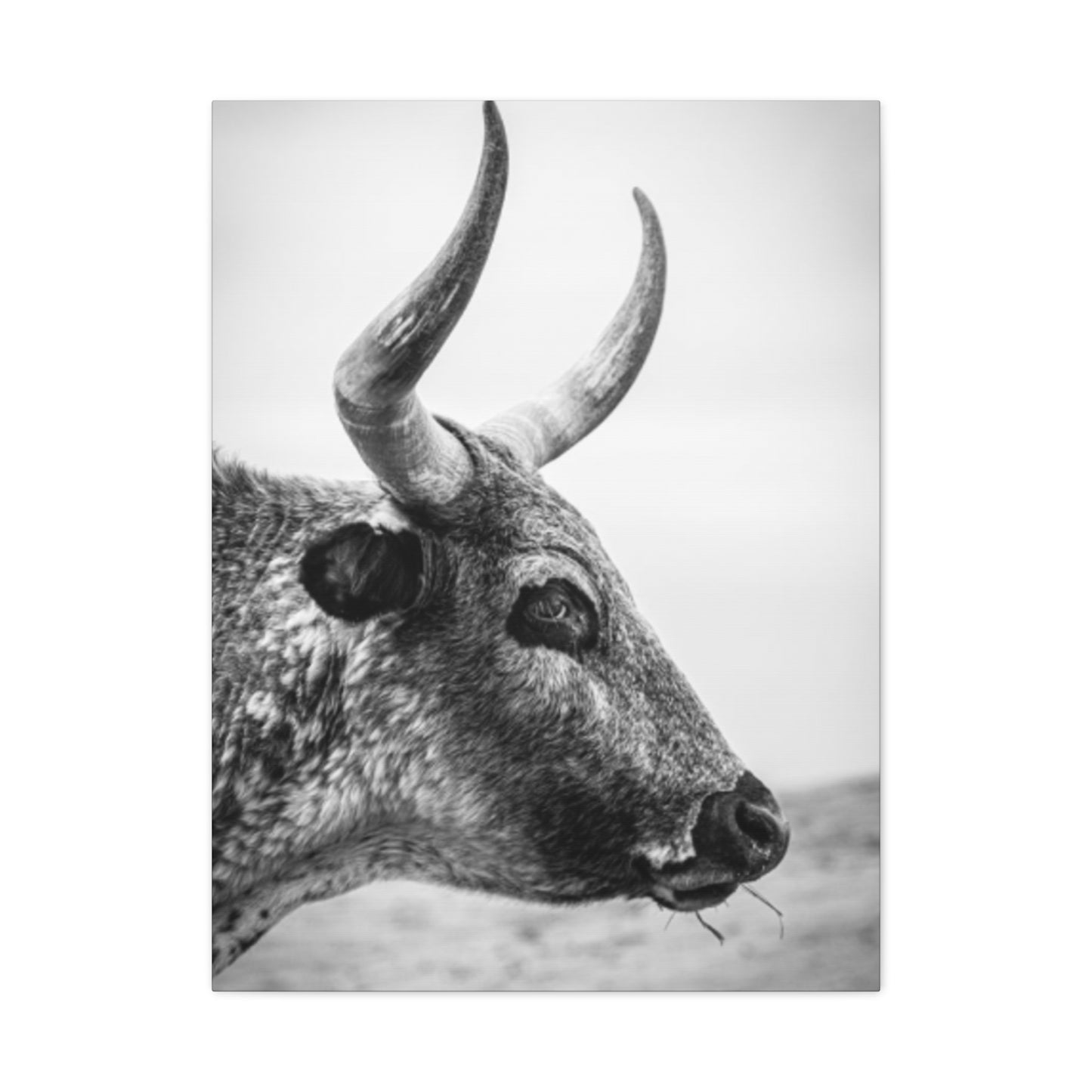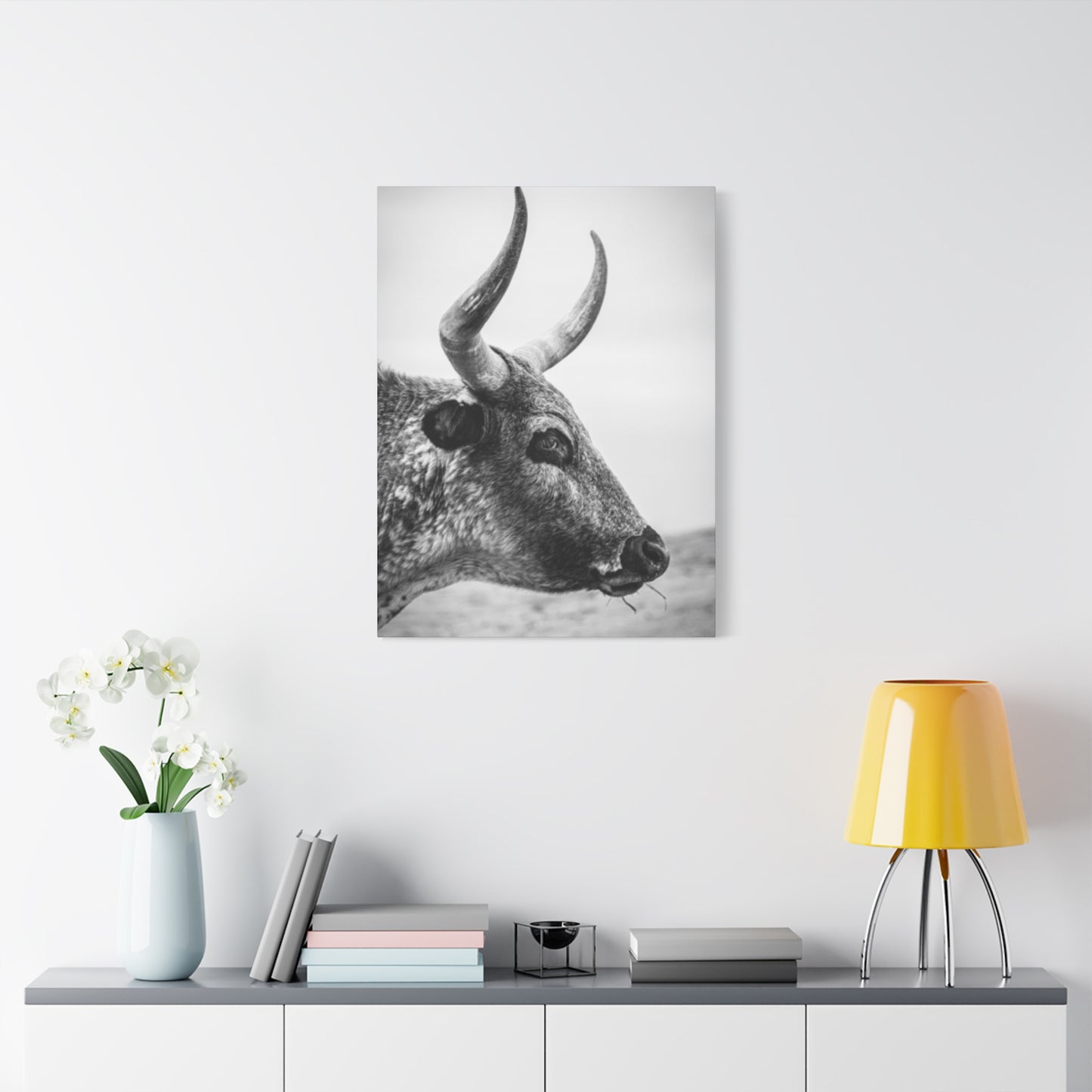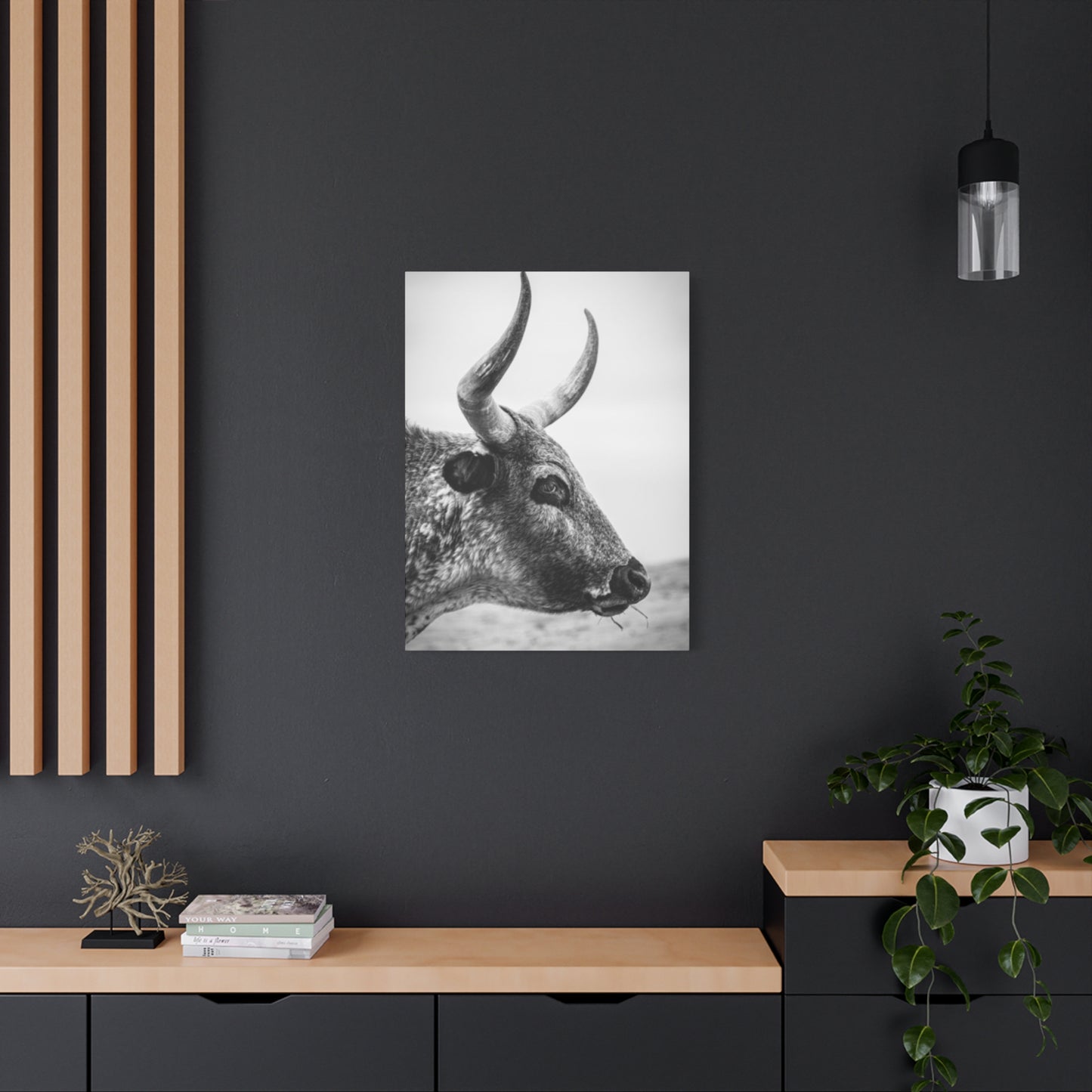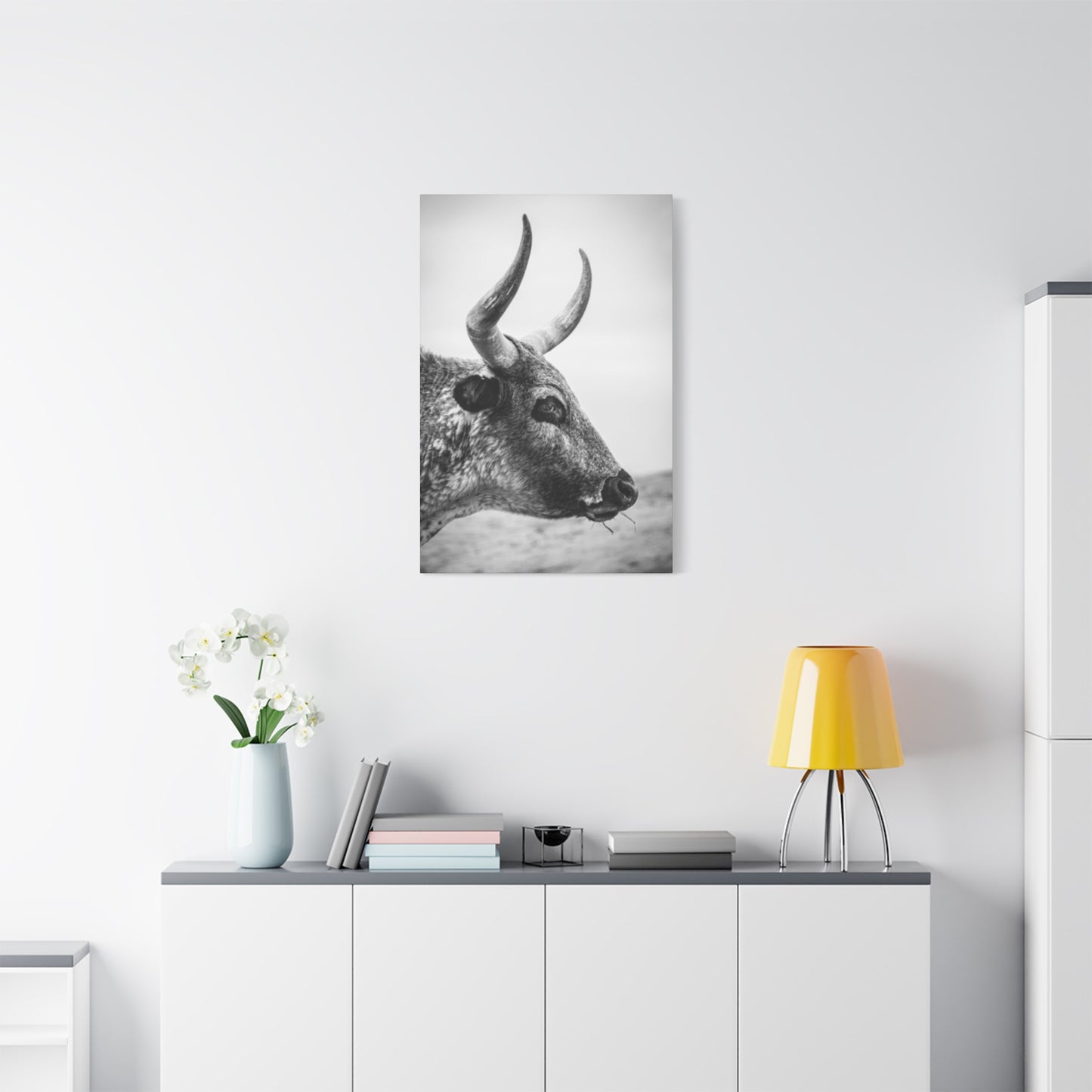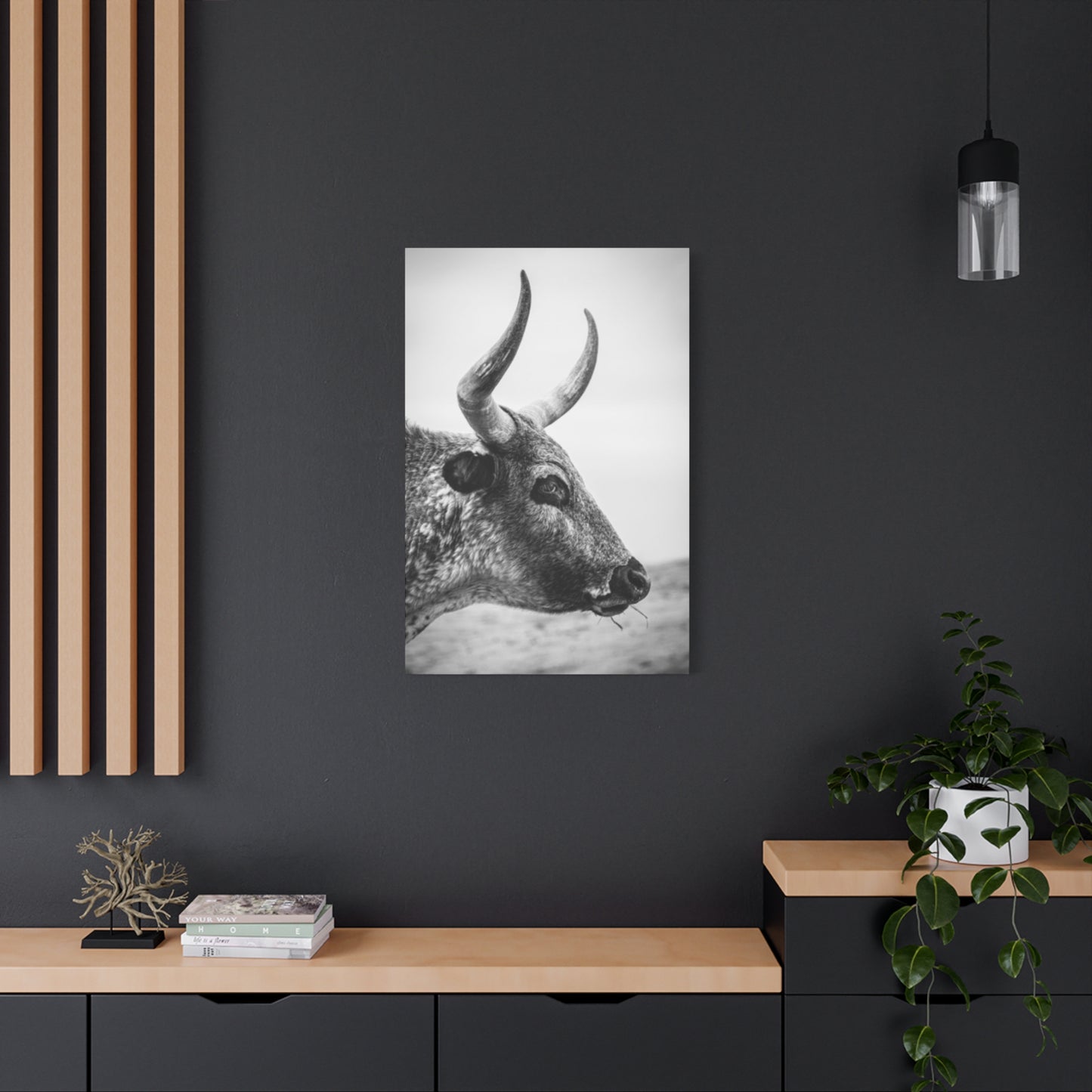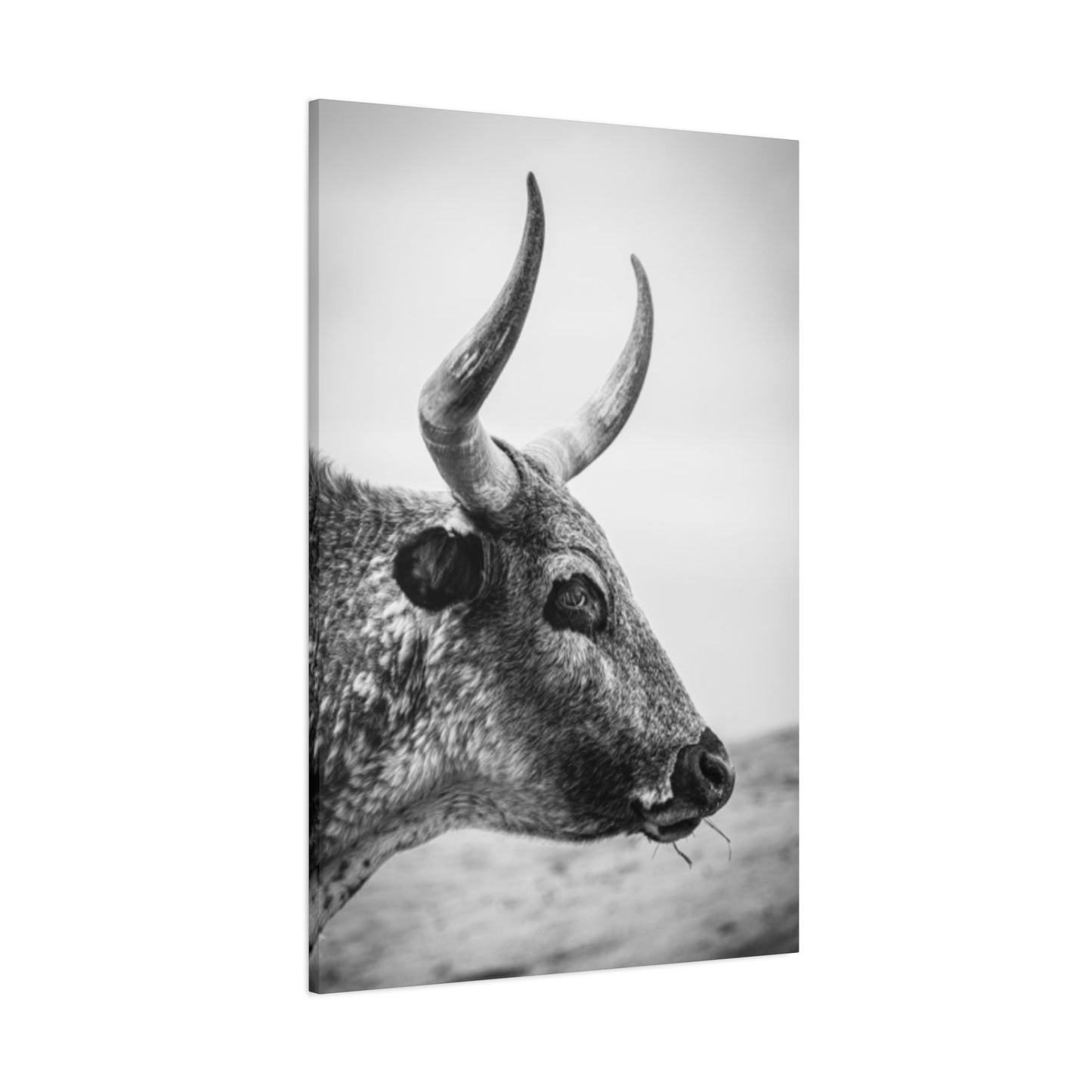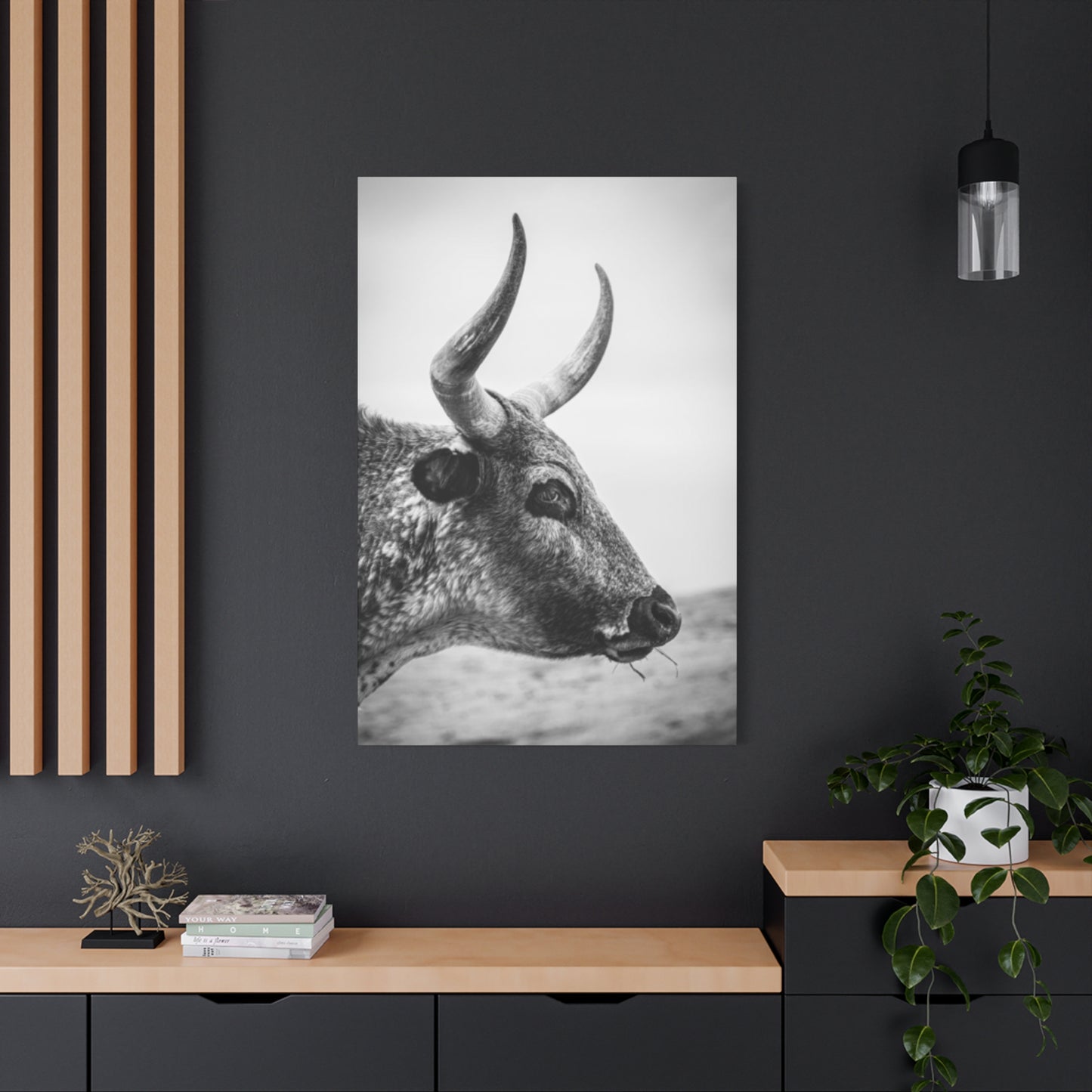The Bold and Majestic: Why Wild Bull Curvy Longhorn Wall Art Commands Attention in Any Room
Decorating your living space with wildlife imagery brings a sense of strength, connection to nature, and timeless beauty. Among the most striking choices available today are canvas prints featuring powerful bulls with impressive curved horns. These magnificent creatures have captured human imagination for centuries, and their presence in home décor continues to grow in popularity. Whether you're drawn to the rugged appeal of countryside aesthetics or simply appreciate the raw power these animals represent, incorporating such artwork into your interior design can create a focal point that sparks conversation and admiration.
The appeal of animal-inspired wall hangings extends beyond mere decoration. These pieces tell stories of wilderness, freedom, and untamed landscapes. When you choose artwork featuring these horned creatures, you're not just filling empty wall space; you're making a statement about your appreciation for nature's grandeur and the spirit of open ranges. The rich brown tones, textured details, and commanding presence of these animals translate beautifully onto canvas, creating artwork that works equally well in contemporary homes, countryside retreats, or urban apartments seeking a touch of natural elegance.
Commanding Presence of Horned Cattle in Home Decoration
The visual impact of artwork featuring cattle with sweeping horns cannot be overstated. These animals possess an inherent nobility that translates exceptionally well to wall-mounted displays. The distinctive curved horns, which can span impressive widths, create natural lines that draw the eye and add geometric interest to any room. The muscular build and confident stance of these creatures convey strength without aggression, making them suitable for various living spaces from family rooms to home offices.
When selecting pieces that showcase these magnificent animals, consider how the positioning and angle of the subject within the frame affects the overall energy of the room. Forward-facing portraits create direct engagement with viewers, establishing an immediate connection and commanding attention. Profile views, alternatively, emphasize the dramatic sweep of the horns and create a sense of movement and grace. Three-quarter angles offer the best of both perspectives, displaying the animal's facial features while still highlighting the impressive horn span.
The coloration of these artworks plays a crucial role in their versatility. Deep brown tones with hints of amber, caramel, and chocolate create warmth that complements wood furnishings and earth-toned color schemes. The natural variations in the animal's coat, from lighter facial markings to darker body shading, provide visual interest without overwhelming the composition. These organic color palettes make such artwork remarkably adaptable, working harmoniously with both neutral and bold interior design choices.
Texture representation in quality canvas prints adds another dimension to the viewing experience. The rough texture of the horns, the softness of the facial features, and the varied patterns of the coat all contribute to a sense of realism that makes the artwork feel alive. High-quality reproduction techniques capture these subtle details, ensuring that the piece maintains visual interest even upon repeated viewing. This attention to detail separates exceptional artwork from ordinary prints, making it worth investing in pieces that showcase superior craftsmanship.
Countryside Aesthetic Through Animal Imagery
Embracing countryside design principles doesn't require relocating to a ranch or farm. Through carefully selected wall displays, you can bring the essence of open plains and ranching heritage into any environment. The aesthetic associated with rural settings emphasizes authenticity, natural materials, and a connection to agricultural traditions. Artwork featuring these horned animals serves as a perfect centerpiece for this design approach, grounding the space in imagery that speaks to simpler times and honest living.
The appeal of this design philosophy lies in its warmth and approachability. Unlike more formal decorating styles that can feel distant or untouchable, countryside-inspired spaces invite relaxation and genuine comfort. The presence of animal portraits reinforces this welcoming atmosphere, reminding us of the natural world and our connection to it. These pieces work particularly well in gathering spaces where family and friends come together, as they create talking points and add personality without pretension.
Incorporating these artworks into your home doesn't mean committing to a complete countryside overhaul. Even in predominantly modern or minimalist spaces, a well-chosen piece featuring these powerful animals can serve as an intriguing contrast that adds depth and character. The key is selecting artwork with clean lines and uncluttered compositions that respect the surrounding aesthetic while introducing natural elements. A single large-format piece can have more impact than multiple smaller prints, creating a gallery-quality focal point that elevates the entire room.
Material choices complement the imagery itself. Canvas stretched over wooden frames provides an organic foundation that enhances the natural subject matter. The slight texture of canvas adds tactile interest that glossy photo paper cannot match, and the matte finish prevents distracting glare while maintaining color vibrancy. Frame selection should support rather than compete with the artwork; simple wooden frames in natural finishes or distressed metals work beautifully, while overly ornate frames can detract from the straightforward beauty of the subject.
Sweeping Horns as Artistic Focus
The most distinctive feature of these animals is undoubtedly their remarkable horns. These structures can reach impressive spans, creating visual drama that few other animal subjects can match. As an artistic element, the horns provide natural curves and lines that guide the viewer's eye through the composition. Artists and photographers who specialize in capturing these animals understand the importance of positioning and lighting to maximize the visual impact of these extraordinary features.
The horn shape itself varies considerably, with some animals displaying gentle upward curves while others sport dramatic sweeps that extend horizontally before curving skyward. This variation means that each piece of artwork carries its own unique character. Some viewers prefer the aggressive spread of widely-spaced horns, which convey power and dominance. Others gravitate toward more graceful configurations that emphasize elegance alongside strength. Understanding your own preference helps guide selection toward pieces that will maintain their appeal over years of display.
Lighting plays a crucial role in horn presentation within artwork. Backlighting can create dramatic silhouettes that emphasize shape and form, while front lighting reveals texture and detail in the horn's surface. Side lighting creates depth through shadow play, making the horns appear to extend beyond the two-dimensional plane of the canvas. Quality reproductions maintain these lighting effects, preserving the photographer's or artist's original vision and ensuring that the dimensional quality translates to your wall.
The horn's natural coloration adds another layer of visual interest. Most display a gradation from darker bases to lighter tips, sometimes with subtle banding or texture variations along their length. These details might seem minor, but they contribute significantly to the overall realism and quality of the artwork. Prints that preserve these nuances demonstrate the difference between mass-produced generic images and carefully crafted artistic reproductions worthy of display in your home.
Regional Heritage Through Animal Portraits
Certain animals are inextricably linked with specific geographical regions and the cultures that developed there. The horned cattle featured in these artworks carry strong associations with regions known for ranching and open-range cattle raising. This connection to place adds layers of meaning to the artwork, transforming it from simple animal portraiture into a celebration of regional heritage and the pioneering spirit that shaped these areas.
The historical significance of these animals in economic development cannot be overlooked. For generations, they represented wealth, sustenance, and the foundation of entire communities. Cattle drives, ranching traditions, and the skills required to manage these powerful animals became central to regional identity. Displaying artwork that features these creatures pays homage to this heritage while bringing a piece of that history into contemporary living spaces. This connection to the past creates depth and narrative that purely decorative pieces cannot match.
Regional design elements naturally complement such artwork. Weathered wood, leather accents, iron hardware, and earth-toned textiles all support the thematic connection. However, the artwork itself can stand alone even without these supporting elements. The universal appeal of strength, freedom, and natural beauty transcends specific design schemes, making these pieces adaptable to various decorating approaches. A minimalist room gains character and warmth from such an addition, while a fully-themed space finds its perfect centerpiece.
Cultural appreciation extends beyond decoration into broader lifestyle choices. Many who choose this type of artwork also value authenticity, craftsmanship, and connection to tradition in other aspects of their lives. The artwork becomes an outward expression of internal values, signaling to visitors what the homeowner holds important. This alignment between décor and personal philosophy creates spaces that feel genuine and cohesive, where every element contributes to a unified vision rather than appearing as disconnected purchases.
Rich Earth Tones in Animal Artwork
The color palette typically associated with these animal portraits centers on warm, earthy browns that create an immediate sense of natural beauty. These tones range from deep chocolate and mahogany to lighter tans, ambers, and creamy beiges. This spectrum of brown hues provides remarkable versatility, working harmoniously with an extensive range of interior color schemes. Whether your walls are painted in cool grays, warm creams, or bold accent colors, brown-toned artwork tends to integrate seamlessly.
The psychological impact of brown in interior spaces deserves consideration. This color is consistently associated with stability, reliability, and organic warmth. Unlike more stimulating colors that can energize or agitate, brown creates a grounding effect that promotes relaxation and comfort. In living areas where you want to foster conversation and connection, or in bedrooms where tranquility is paramount, brown-dominant artwork supports these atmospheric goals without overwhelming the senses.
Many quality pieces incorporate color variation beyond monochromatic brown. Subtle hints of gray in shadowed areas, warm amber highlights where light catches the coat, and the occasional cream or white marking all add visual complexity. These variations prevent the artwork from appearing flat or monotonous, instead creating depth that rewards closer inspection. The interplay of light and shadow within the brown spectrum demonstrates the skill of the original photographer or artist and the quality of the reproduction process.
Complementary colors occasionally appear in backgrounds or environmental elements within the composition. Soft greens suggesting grassland, pale blues hinting at sky, or neutral grays indicating misty atmosphere all serve to frame the central subject without distracting from it. These subtle background colors can help tie the artwork to other elements in your room, creating visual bridges between the wall display and furnishings, textiles, or accent pieces elsewhere in the space.
Capturing Wild Spirit in Portrait Format
Portrait-style compositions focusing closely on the animal's face and upper body create intense, personal connections with viewers. This format allows for maximum detail in facial features, eye expression, and the texture of the coat and horns. Unlike landscape-oriented pieces that might show the animal in its environment, portraits eliminate distractions and place full attention on the creature itself. This intimate approach transforms the artwork from mere decoration into something that feels almost like a window into the animal's presence.
The eyes are particularly important in portrait compositions. These animals possess remarkably expressive eyes that can convey wisdom, strength, and a hint of wildness that reminds viewers of the creature's untamed nature. Quality artwork captures this expression, ensuring that the eyes appear lifelike and engaging rather than dull or vacant. The catch-light, or reflection of light in the eye, is a crucial detail that professional photographers and artists know to preserve. This small highlight brings the eyes to life and significantly impacts the overall quality of the piece.
Facial structure and bone definition contribute to the commanding presence these portraits convey. The broad forehead, prominent brow, and strong jawline all speak to the animal's physical power. Shadows and highlights that define these features add sculptural quality to the image, creating a three-dimensional effect despite the flat canvas surface. This sense of depth makes the artwork more engaging and prevents it from becoming background noise in your decorating scheme.
Detail in the fur or hair texture provides additional visual interest in portrait formats. The varied lengths and directions of growth, the way light catches individual strands, and the overall pattern created by the coat all contribute to realism. High-resolution printing techniques preserve these details, ensuring that the image maintains clarity and interest even when viewed from close distances. This attention to fine detail justifies the investment in quality artwork over cheaper alternatives that sacrifice resolution and accuracy.
Natural Habitat Elements in Wildlife Art
While portraits focus tightly on the animal itself, some compositions include environmental elements that place the creature within its natural habitat. These might include grasslands stretching toward distant horizons, rocky terrain suggesting rugged landscapes, or atmospheric effects like morning mist or golden-hour sunlight. These contextual elements add narrative depth to the artwork, transforming a simple animal portrait into a scene that tells a broader story about wildness and open spaces.
Background elements should enhance rather than compete with the main subject. The most effective compositions use selective focus, keeping the animal sharp and detailed while allowing environmental features to soften slightly. This technique naturally draws attention to the intended focal point while still providing the context that enriches the overall scene. The balance between subject and environment separates skilled wildlife photography and illustration from amateur attempts that fail to establish clear visual hierarchy.
Seasonal indicators within the artwork can influence its emotional impact and aesthetic contribution to your space. Images suggesting spring or summer, with green vegetation and warm light, convey vitality and growth. Autumn scenes with golden grasses and warm, slanting light create nostalgia and reflection. Winter imagery with muted colors and possibly snow or frost suggests endurance and strength. Consider which seasonal feeling aligns best with the atmosphere you want to create in the room where the artwork will hang.
Weather conditions depicted in the artwork also affect its character. Clear, bright conditions create optimistic, straightforward presentations. Overcast skies or morning fog add mystery and depth. Dramatic clouds or storm light introduce tension and power that complement the animal's inherent strength. These atmospheric choices allow you to select artwork that matches both your aesthetic preferences and the emotional tone you want to establish in your space.
Canvas Material Advantages for Animal Art
Canvas has long been favored as a medium for reproducing fine art and photography, and for good reason. The material's slight texture adds depth and richness that flat paper cannot match. This texture interacts with printed imagery in subtle ways, creating a hand-crafted appearance that elevates the work beyond simple reproduction. For animal artwork specifically, canvas texture can enhance the perception of fur, hide, and natural surfaces, adding to the overall realism and tactile appeal of the piece.
Durability represents another significant advantage of canvas prints. Unlike paper-based alternatives that can tear, crease, or suffer water damage easily, properly treated canvas withstands the normal challenges of home display. The material resists fading when quality inks are used, maintaining color vibrancy for years or even decades with proper care. This longevity makes canvas an intelligent investment, particularly for larger pieces that represent significant expenditures and central elements in your decorating scheme.
The stretched canvas format, where the material is pulled taut over a wooden frame, creates a gallery-wrapped appearance that eliminates the need for traditional framing under glass. This frameless presentation offers several advantages: it reduces glare, allows the artwork to be viewed from angles without reflection interference, and creates a contemporary aesthetic that works well in modern homes. The wrapped edges can be printed with continuation of the image or left in complementary solid colors, depending on preference and the specific artwork.
Maintenance requirements for canvas prints are refreshingly minimal. Occasional dusting with a soft, dry cloth keeps the surface clean, and the material doesn't attract dust as readily as some alternatives. The absence of glass means no fingerprints, no need for glass cleaner, and no risk of breakage. This low-maintenance aspect makes canvas ideal for busy households, homes with children, or anyone who prefers décor that looks beautiful without demanding constant attention.
Decorating Living Spaces with Animal Themes
Living rooms serve as the heart of most homes, spaces where families gather and guests are entertained. The artwork displayed in these areas makes a statement about the homeowners' taste, interests, and values. Choosing pieces featuring powerful animals communicates an appreciation for nature, strength, and authenticity. These selections tend to be conversation starters, giving visitors something interesting to discuss and admire while establishing the room's character and focal points.
Scale considerations are paramount when selecting artwork for living areas. These rooms typically feature the most wall space in the home, allowing for larger pieces that would overwhelm smaller rooms. A commanding image of these impressive animals benefits from generous sizing that allows viewers to appreciate the details and feel the presence of the subject. Undersized artwork in a large living room feels lost and fails to achieve the intended impact, so err toward larger dimensions when space permits.
Placement height affects viewer engagement with the artwork. The center of the piece should typically align with average eye level, approximately 57-60 inches from the floor. This positioning creates natural, comfortable viewing without requiring viewers to crane their necks upward or stoop to appreciate the work. Above seating areas, maintain enough clearance to prevent the artwork from appearing to crowd the furniture, generally leaving 6-12 inches between the top of a sofa back and the bottom of the frame.
Lighting significantly influences how artwork appears in your space. Natural light creates ever-changing displays as the quality of illumination shifts throughout the day, but be cautious about direct sunlight that can cause fading over time. Artificial lighting options include picture lights mounted directly above the frame, track lighting aimed at the wall, or ambient room lighting that illuminates the piece indirectly. Experiment with different approaches to find what best showcases your specific artwork while creating the desired atmosphere in the room.
Portrait Orientation Benefits for Wall Space
Vertical or portrait-oriented artwork suits certain wall spaces better than horizontal alternatives. Walls between windows, narrow wall sections flanking doorways, or vertical spaces in stairways often accommodate portrait formats more gracefully than landscape pieces. When featuring animals with prominent upright horns, portrait orientation emphasizes these vertical elements, creating visual harmony between the subject's natural form and the frame's shape. This alignment feels more natural and intentional than forcing a horizontally-oriented subject into a vertical frame or vice versa.
The vertical format naturally draws the eye upward, which can help make rooms with low ceilings feel taller. This perceptual trick works because our eyes follow the dominant lines within compositions; strong vertical lines encourage upward movement, creating the impression of height. In rooms where ceiling height is a limitation, strategically placed vertical artwork can mitigate this challenge. The effect is subtle but cumulative, particularly when multiple vertical elements throughout the room reinforce the upward direction.
Portrait-oriented pieces pair well with furniture arrangements that have horizontal dominance. Sofas, consoles, and low cabinets all establish strong horizontal lines. Artwork that echoes these horizontal orientations can sometimes feel redundant or fail to provide enough contrast. Vertical pieces interrupt and balance these horizontal elements, creating more complex and interesting visual relationships. This interplay between horizontal and vertical elements prevents spaces from feeling too static or one-dimensional.
Gallery walls incorporating multiple pieces often benefit from including portrait-oriented options alongside landscape formats. This variety in orientation creates more dynamic arrangements than walls featuring all identical shapes. When designing such displays, portrait pieces can anchor the arrangement at key points, with smaller or horizontal pieces filling in around them. The mixed orientations also allow for more creative spacing and relationships between pieces, resulting in gallery walls that feel intentional and well-composed rather than arbitrarily arranged.
Wildlife Photography Principles in Home Art
Quality wildlife photography requires patience, skill, and deep understanding of animal behavior. The best images capture moments of natural behavior, authentic expressions, and animals at ease in their environment rather than stressed by human presence. When selecting artwork derived from wildlife photography, these qualities separate exceptional pieces from merely adequate ones. Look for images where the animal appears natural and unposed, where the technical execution, lighting, focus, and composition, demonstrates professional expertise, and where the moment captured reveals something meaningful about the creature.
Technical quality in wildlife photography manifests in several observable ways. Sharpness, particularly in critical areas like eyes and facial features, indicates proper focus and technique. Appropriate depth of field renders the subject clearly while managing background elements, either incorporating them as context or blurring them to emphasize the main subject. Exposure balances highlight and shadow detail, avoiding blown-out bright areas or impenetrably dark shadows. Color accuracy represents the animal's true appearance without unrealistic saturation or tinting.
Ethical considerations in wildlife photography have gained increasing attention in recent years. Responsible photographers minimize disturbance to their subjects, never baiting or harassing animals to provoke interesting behaviors. They maintain appropriate distances and use equipment that allows them to capture images without approaching too closely. When purchasing artwork, consider whether the images were captured ethically. Many photographers now include information about their methods and approach, allowing consumers to make informed choices that align with their values regarding wildlife treatment.
The narrative quality of wildlife photography elevates good images to great ones. Rather than simply documenting that an animal exists, compelling images tell stories about behavior, relationships, struggles, or character. An animal portrait that captures a specific expression or moment of connection creates emotional resonance that static, standard poses cannot match. These narrative elements transform the artwork from decoration into communication, conveying something meaningful about the subject that viewers can appreciate and remember.
Decorating Multiple Rooms with Coordinated Themes
While individual pieces make statements in single rooms, coordinating animal-themed artwork throughout multiple spaces creates cohesion and tells a broader story about your aesthetic preferences. This doesn't require identical pieces in every room; rather, related subjects, similar styles, or complementary compositions tie spaces together. A home featuring various animal subjects, or multiple interpretations of similar subjects, feels thoughtfully curated rather than randomly decorated.
Varying the scale and intensity of animal artwork across rooms prevents the theme from becoming overwhelming. A large, dramatic piece in the main living area establishes the theme prominently. Smaller or more subtle pieces in adjacent spaces, hallways, or bedrooms echo the theme without competing for attention. This graduated approach allows the theme to permeate the home without dominating every space or becoming monotonous through excessive repetition.
Different room functions suggest different approaches to animal artwork. Public spaces like living rooms and dining areas can accommodate bolder, more dramatic pieces that make strong statements. Private spaces like bedrooms might benefit from gentler, more contemplative compositions that support rest and relaxation rather than commanding attention. Home offices could feature animals in alert, attentive poses that inspire focus and determination. Matching the energy of the artwork to the room's purpose enhances the effectiveness of both.
Seasonal or occasional rotation of pieces keeps the décor feeling fresh while maximizing your investment in multiple artworks. Pieces currently in storage can be brought out as others are temporarily retired, allowing you to experience your collection differently over time. This rotation also allows you to respond to seasonal changes, mood shifts, or evolving aesthetic preferences without abandoning pieces you value. Storage of artwork not currently displayed should protect it from damage; wrap canvas pieces in clean cloth, store them upright rather than stacked, and keep them in climate-controlled areas away from extreme temperatures or humidity.
Texture Representation in Animal Art
The tactile qualities of an animal's coat, the rough surface of horns, and the varied textures of the environment all contribute to artwork's visual richness. High-quality reproduction captures these textural variations, allowing viewers to imagine the feel of the surfaces depicted. This textural information adds realism and depth, transforming flat images into experiences that engage viewers' tactile imagination even though they can't actually touch the subject.
Fur or hair texture varies significantly across the animal's body, creating patterns and directional flows that skilled photographers highlight through appropriate lighting and focus. The coarse guard hairs along the neck and shoulders contrast with softer facial fur, while the ears might display fine, short covering. These variations aren't merely superficial details; they reveal the animal's adaptation to its environment and add to the overall sense of life and authenticity in the image.
Horn texture deserves particular attention given its visual prominence in many compositions. The banded, ridged surface that many horned animals display creates linear patterns that catch light differently along the horn's curve. Some areas might appear smooth and light-reflective while others show pronounced ridging and texture. Quality photographs preserve these distinctions, and quality printing reproduces them faithfully. This attention to textural detail separates premium artwork from cheap reproductions that flatten everything into uniform smoothness.
Environmental textures within the composition, when present, provide context and depth. Rough tree bark, weathered fence posts, or the varied textures of grassland all contribute to the scene's believability. These supporting textures shouldn't compete with the main subject but rather create a rich visual environment that suggests the three-dimensional world the animal inhabits. The interplay between multiple textures creates visual complexity that rewards extended viewing and prevents the artwork from becoming visually exhausted after initial examination.
Selecting Art for Contemporary Home Styles
Modern and contemporary homes might seem unlikely candidates for animal-focused artwork, but thoughtful selection bridges the apparent style gap beautifully. The key lies in choosing pieces with clean compositions, strong graphic qualities, and minimal extraneous detail. A portrait-style image of an animal against a simple, uncluttered background works remarkably well in minimalist spaces, where it serves as the visual anchor the room needs without introducing incompatible decorative elements.
Color relationships take on heightened importance in contemporary settings. Spaces dominated by whites, grays, and blacks find warmth and organic contrast in brown-toned animal imagery. The natural colors introduce human-friendly warmth without compromising the clean aesthetic. Conversely, contemporary spaces featuring bold accent colors can incorporate animal artwork with complementary or neutral tones that don't compete with the existing color scheme while adding textural and subject variety.
The frameless gallery-wrap presentation of modern canvas prints aligns perfectly with contemporary design sensibilities. The absence of ornate frames eliminates traditional elements that might clash with modern furniture and architecture. The clean edges and three-dimensional quality of stretched canvas create sculptural presence appropriate to contemporary spaces. This presentation style allows the artwork to feel like an integral architectural element rather than something merely hung as an afterthought.
Scale and negative space considerations become particularly important in contemporary settings. These design approaches often emphasize breathing room and intentional emptiness, so artwork placement must respect these principles. A single large piece with ample wall space surrounding it honors contemporary design values better than multiple smaller pieces clustered together. The bold statement of a substantial animal portrait suits the confident, uncluttered aesthetic that defines successful contemporary interiors.
Balancing Animal Art with Other Decorative Elements
Successfully incorporating animal artwork into your overall design requires balancing it with other decorative elements. The goal is integration rather than isolation, where the animal art feels like an intentional part of a cohesive whole rather than an unrelated addition. This balance involves considering scale, style, color, and thematic relationships between the artwork and surrounding elements like furniture, textiles, and accessories.
Furniture proximity and relationship to artwork affects visual impact. Pieces hung above sofas or consoles should relate to the furniture's width; generally, artwork should span two-thirds to three-quarters of the furniture's width to create balanced visual weight. Too narrow, and the art appears insignificant; too wide, and it overwhelms the furniture piece. This proportional relationship creates harmony that feels natural even if viewers don't consciously register the mathematical relationship.
Color echoing between artwork and room elements creates cohesion without demanding exact matches. If your animal artwork features rich brown tones, incorporating similar browns in throw pillows, area rugs, or decorative objects creates visual threads that tie the room together. These don't need to be identical shades; variations in tone and intensity add interest while maintaining the color relationship. This approach works more effectively than trying to match colors exactly, which often feels forced and overly coordinated.
Thematic consistency extends beyond literal representation. A room featuring animal artwork doesn't require animal-themed everything, which would quickly become clichéd. Instead, consider broader themes like nature, authenticity, or organic materials that relate to the artwork without replicating it. Natural wood furniture, stone or mineral decorative objects, and textiles in organic fibers all support animal artwork thematically without being heavy-handed about the connection.
Photography Versus Illustration Styles
Animal artwork divides broadly into photographic and illustrated approaches, each offering distinct advantages and aesthetic qualities. Photographic pieces provide realism and documentary authenticity that illustration cannot match. They capture actual moments, real light conditions, and genuine animal subjects. This authenticity appeals to those who value naturalistic representation and want artwork that accurately reflects how these animals appear in life.
Illustration, whether traditional painting, digital art, or mixed media, offers interpretive freedom impossible in straight photography. Artists can emphasize specific features, adjust compositions beyond what's photographically possible, and introduce stylistic elements that express their personal vision. Illustrated animal artwork might incorporate abstract elements, unusual color treatments, or compositional approaches that serve artistic rather than documentary goals. These pieces appeal to those seeking more overtly artistic treatments rather than pure representation.
Hybrid approaches combining photographic bases with digital painting or artistic effects offer middle ground between pure photography and traditional illustration. These pieces maintain photographic realism in key areas while introducing artistic enhancements that elevate the work beyond straight documentation. This approach can emphasize textures, adjust lighting for dramatic effect, or simplify backgrounds while maintaining realistic animal representation. The result feels both authentic and artistically interpreted.
Personal preference should guide your choice between these approaches. Consider whether you respond more strongly to photographic realism that documents actual subjects or artistic interpretation that prioritizes aesthetic vision over literal accuracy. Neither approach is inherently superior; they serve different tastes and decorating philosophies. Many collectors ultimately incorporate both approaches in their homes, appreciating each style's unique contributions to their overall aesthetic.
Display Height and Viewing Angle Considerations
Proper artwork placement significantly affects its impact and the viewer's experience. The standard guideline placing the artwork's center at approximately 57-60 inches from the floor works well for most situations, representing average eye level for standing viewers. This height creates comfortable viewing that feels natural and unconsidered, allowing the artwork to communicate without the distraction of awkward positioning.
Seating areas require adjusted thinking about viewing heights. If the primary viewing position is seated, as with artwork above a sofa or facing dining chairs, center the piece at seated eye level, typically 42-48 inches from the floor to the artwork's center. This adjustment ensures that those spending extended time in the space experience optimal viewing. Artwork hung at standing eye level above seating areas requires viewers to crane their necks uncomfortably, diminishing the pleasure the piece should provide.
Stairways present unique challenges and opportunities for artwork display. The ascending or descending path means viewers encounter artwork from continuously changing angles and distances. Position pieces to be viewed comfortably from mid-stair rather than optimizing for top or bottom viewing. This placement ensures the artwork looks correct during the longest portion of viewer engagement. Gallery walls along stairways can create dramatic ascending or descending arrangements that acknowledge and enhance the architectural feature.
Viewing distance relates directly to artwork size and detail. Large pieces need substantial viewing distance to be appreciated as unified compositions rather than forcing viewers to scan across them in sections. Ensure furniture arrangements allow viewers to step back adequately. Conversely, pieces with fine detail reward closer inspection; consider whether your space allows viewers to approach closely when admiring intricate work. The ideal placement accommodates both distant appreciation of overall composition and closer examination of details.
Color Temperature in Animal Artwork
Understanding color temperature helps in selecting artwork that harmonizes with your space's existing palette and lighting conditions. Warm colors, those with yellow, orange, or red undertones, create cozy, inviting atmospheres. Brown-toned animal artwork naturally falls into the warm category, making it inherently suitable for creating comfortable, welcoming spaces. These warm tones advance visually, making images feel closer and more immediate, strengthening the sense of connection with the subject.
Cool colors containing blue, green, or violet undertones create calmer, more distant feelings. While the animal itself might display warm brown tones, background elements incorporating cool colors create temperature contrast that adds visual interest. Cool backgrounds recede visually, pushing the warm-toned subject forward and enhancing three-dimensional illusion. This temperature contrast creates depth and sophistication beyond what monochromatic warm or cool schemes achieve.
Room lighting affects color temperature perception dramatically. Warm artificial lighting enhances warm tones in artwork while dulling cool colors. Cool daylight or daylight-spectrum bulbs have the opposite effect, potentially making warm browns appear slightly grayer or less saturated. Consider your room's primary lighting when selecting artwork; ideally, view potential pieces under similar lighting conditions to what they'll experience in your home. This consideration prevents disappointment when artwork appears different after installation than it did in the store or online.
Seasonal light changes affect how artwork appears throughout the year. Winter's low-angle, often diffused daylight differs substantially from summer's bright, direct light. Autumn's golden-hour effects enhance warm tones while spring's clear light brings out details and textures. These changes mean your artwork continually reveals new aspects as seasonal light shifts, keeping it visually fresh and preventing it from becoming stale through unchanging appearance.
Animal Symbolism in Personal Spaces
The animals we choose to display in our homes reveal aspects of our personalities, values, and aspirations. Horned cattle carry specific symbolic associations that viewers consciously or unconsciously register. These animals represent strength, obviously, but also patience, determination, and connection to the land. Choosing such imagery suggests that these qualities resonate with you personally, whether as traits you possess, values you hold, or aspirations you pursue.
Different cultures assign varied symbolic meanings to cattle and horns specifically. In some traditions, they represent abundance and prosperity, connecting to their historical role in wealth measurement. Other traditions emphasize their nurturing aspects, as they provide sustenance through milk and meat. Still others focus on their power and the respect such powerful animals command. This symbolic flexibility means viewers from different backgrounds might interpret the same artwork through different symbolic lenses, each valid within their cultural framework.
Personal history influences symbolic interpretation powerfully. Someone raised on a ranch or farm likely connects with cattle imagery through direct experience and nostalgia. Urban dwellers might interpret the same images as representing escape from city life, connection to nature they feel they've lost, or appreciation for ways of life different from their own. Photography from travels to certain regions might carry memories of specific experiences, adding personal layers of meaning beyond universal symbolism.
Using animal symbolism intentionally in different rooms creates subtle psychological effects. A home office featuring animals in alert, attentive poses might inspire focus and determination. Bedrooms with more restful animal portraits support relaxation and peaceful sleep. Social spaces benefit from animals displaying confidence and calm strength, qualities that support successful gathering and conversation. This intentional symbolic deployment makes artwork functional beyond its decorative role.
Maintaining Canvas Art for Longevity
Proper care ensures your canvas artwork maintains its beauty for decades. Fortunately, canvas prints require minimal maintenance compared to many other art forms. The absence of glass eliminates concerns about breakage, streaking, or glare, while the material's durability resists common household hazards. Basic care practices protect your investment and keep artwork looking fresh throughout its lifespan.
Dust accumulation occurs gradually but inevitably. Address it regularly with gentle dusting using soft, clean cloths or feather dusters. Avoid applying pressure that could damage the canvas surface or underlying print. For more substantial cleaning needs, very lightly dampen a soft cloth with water only, never cleaning chemicals or solvents, and gently wipe the surface. Allow the canvas to dry completely before considering it cleaned. Frequency depends on your environment; dusty areas or homes with pets require more frequent attention than clean, pet-free environments.
Environmental conditions significantly impact artwork longevity. Avoid hanging canvas pieces in direct sunlight, which causes fading over time regardless of ink quality. High humidity areas like bathrooms or steamy kitchens risk mold growth and material degradation. Extreme temperature fluctuations stress the canvas material and can affect adhesive bonding. Maintain relatively stable, moderate conditions to maximize lifespan. These guidelines don't require museum-level environmental control, just reasonable attention to avoiding extreme conditions.
Handling and moving artwork demands care to prevent damage. Always grasp frames rather than touching the canvas surface, where oils from hands can cause deterioration or staining. When moving pieces, carry them from the frame's bottom and side simultaneously, distributing weight evenly. Never stack canvas pieces face-to-face or lean them against rough surfaces that could scratch or abrade the printed surface. Proper handling prevents damage that reduces value and appearance, protecting your investment through simple mindfulness.
Creating Gallery Walls with Animal Themes
Gallery walls featuring multiple pieces create dramatic impact impossible with single artworks. When centered around animal themes, these arrangements tell more complex stories and provide opportunities for size and orientation variety. Successful gallery walls require planning and consideration of spatial relationships, but the results justify the effort, creating custom installations that reflect personal taste and transform entire walls into artistic statements.
Layout planning should occur before hanging begins. Arrange pieces on the floor in various configurations, experimenting with spacing and relationships until you find pleasing arrangements. Photograph arrangements you like, allowing later comparison and decision-making without needing to maintain floor layouts indefinitely. Consider the overall shape of the arrangement; asymmetrical organic shapes feel more contemporary and dynamic than rigid grid patterns, though both approaches can work depending on your aesthetic preferences.
Spacing between pieces affects overall cohesion and breathing room. Closer spacing, with just two to four inches between frames, creates unified arrangements that read as single installations. Wider spacing emphasizes individual pieces within the collection, allowing each more independence. Neither approach is universally correct; the choice depends on whether you want the wall to feel like one large composition or a collection of related individual pieces. Consistency in spacing, whatever measurement you choose, creates intentional appearance rather than haphazard clustering.
Variety within unity creates the most successful gallery walls. Include different sizes and orientations while maintaining common elements that unify the collection. Common elements might include similar color palettes, related subjects, matching frames, or consistent artistic styles. Too much similarity creates monotonous walls, while too much variety appears chaotic and unplanned. Finding the balance point where pieces clearly relate while maintaining individual interest separates successful galleries from failed attempts.
Artificial Lighting for Animal Artwork Display
Thoughtful lighting transforms good artwork into stunning displays. While natural light creates beautiful effects, it's inconsistent and potentially damaging through UV exposure and heat. Artificial lighting allows controlled, consistent illumination that showcases artwork optimally while protecting it from damage. Several lighting approaches work effectively, each with advantages worth considering for your specific situation.
Picture lights mount directly above or below frames, providing focused illumination that highlights the artwork while creating ambient wall wash effects. These dedicated fixtures ensure consistent lighting regardless of room conditions, making them ideal for spaces where artwork is the primary focal point. Modern LED picture lights consume minimal energy, generate little heat that might damage artwork, and provide excellent color rendering that shows the artwork accurately. Battery-operated versions offer installation flexibility without electrical work requirements.
Track lighting and adjustable spotlights provide flexible solutions for illuminating multiple pieces or accommodating future arrangement changes. Position tracks to aim light at walls from approximately thirty-degree angles, which reveals texture and dimension without creating harsh shadows or hot spots. Adjustable fixtures let you redirect light as arrangements change, making this approach adaptable to evolving decorating schemes. Choose fixtures with appropriate beam widths; narrow spots work for small pieces while flood beams suit larger works.
Ambient room lighting from recessed cans, chandeliers, or floor lamps can sufficiently illuminate artwork when thoughtfully positioned. This approach integrates artwork lighting into overall room illumination plans rather than treating it separately. The advantage lies in simplicity and reduced visual clutter from dedicated art lights. The disadvantage is less control over specific artwork illumination and potential for uneven lighting depending on fixture positions and room layout. This approach works best when artwork placement can be coordinated with existing or planned lighting during initial room design.
Color temperature selection in bulbs significantly affects artwork appearance. Warm white bulbs, typically 2700-3000 Kelvin, enhance warm tones in brown-focused animal artwork, creating cozy, inviting presentations. Daylight bulbs around 5000-5500 Kelvin provide more neutral, accurate color rendering similar to natural daylight. The choice depends on desired atmosphere and whether you want lighting to enhance the artwork's warm tones or represent them neutrally. Test different temperatures if possible before committing to permanent installations.
Artwork Selection for Open Floor Plans
Open floor plans challenge decorators to create cohesion across multiple functional zones within single large spaces. Artwork selection becomes crucial for defining areas while maintaining overall unity. Animal-themed pieces can anchor different zones while related subjects, similar styles, or coordinated frames create visual threads connecting distinct areas into cohesive wholes.
Scale variation helps differentiate spaces within open plans without requiring physical barriers. Larger, more commanding animal portraits can define primary gathering areas, establishing focal points around which seating arrangements organize. Smaller pieces in dining or transitional zones create interest appropriate to their supporting roles. This hierarchy guides eye movement through the space while acknowledging that not all areas deserve equal visual weight.
Sight lines throughout open plans require consideration when positioning artwork. Pieces visible from multiple vantage points should present well from all angles, without compositional elements that only work from specific positions. Consider how artwork appears when entering the space, when moving through it, and from primary seating areas. This multi-perspective thinking ensures artwork succeeds throughout the space rather than optimizing for single viewpoints.
Color coordination across visible zones creates unity in open plans where traditional room divisions don't exist. A palette established by primary animal artwork in the main seating area can be referenced in supporting pieces throughout visible spaces. This doesn't require identical colors everywhere, but rather thoughtful relationships that tie zones together. Warm browns from animal subjects might appear in varying concentrations and contexts throughout the space, creating subliminal connections that unify the environment.
Style consistency matters more in open plans than in traditionally divided homes. Mixing highly different artistic styles across zones visible to each other creates discord and confusion. While some variety adds interest, maintaining generally compatible approaches, whether photographic realism, painterly illustration, or contemporary graphic treatments, creates smoother visual flow. Save dramatic style shifts for spaces separated by doors or substantial architectural divisions.
Conclusion
In conclusion, Wild Bull Curvy Longhorn wall art is a bold, commanding addition to any space, offering both a striking visual presence and a unique sense of strength and character. The depiction of powerful, curvaceous longhorns—symbols of rugged beauty and untamed nature—instantly captures attention, making it an ideal choice for those looking to add a touch of drama, energy, and masculinity to their interior decor. This type of artwork evokes feelings of grandeur and fierceness, transforming any room into a conversation starter and an expression of personal style.
One of the most striking elements of Wild Bull Curvy Longhorn wall art is its ability to create a focal point within a room. Whether placed above a fireplace, as the centerpiece of a feature wall, or incorporated into a gallery arrangement, the image of the wild bull with its gracefully curving horns exudes confidence and dominance. The bold lines and intricate detailing in the artwork lend it a larger-than-life presence, while the deep, rich tones often associated with this kind of imagery—earthy browns, reds, and blacks—add depth and warmth to the space.
Beyond its visual impact, Wild Bull Curvy Longhorn wall art taps into a deep-seated symbolism. The longhorn itself is often associated with qualities like resilience, independence, and strength, making it an ideal representation of these traits within a home. It brings a touch of the wild, untamed beauty of nature into the indoor environment, infusing the space with a raw, untouchable energy. This makes it an excellent choice for rooms where power, confidence, and sophistication are desired—such as in a study, den, or even an entryway.
The rugged beauty of this type of wall art also brings a sense of individuality and uniqueness to a room. For those who appreciate bold and unconventional decor choices, Wild Bull Curvy Longhorn pieces stand out as striking works of art that showcase personal taste. It is especially well-suited for more rustic, industrial, or southwestern-style interiors, where it can complement the natural textures of wood, stone, and leather. However, with the right framing and placement, it can also create a dramatic contrast in modern or minimalist spaces, infusing them with energy and personality.
Ultimately, Wild Bull Curvy Longhorn wall art is not just a decoration—it’s a statement. It commands attention and asserts its presence in any room, making it the perfect choice for those who want to convey strength, independence, and boldness. By incorporating this type of artwork into your home, you’re not only adding a visually stunning piece to your space but also infusing your environment with an air of confidence and untamed beauty that will continue to captivate and inspire all who enter.


















